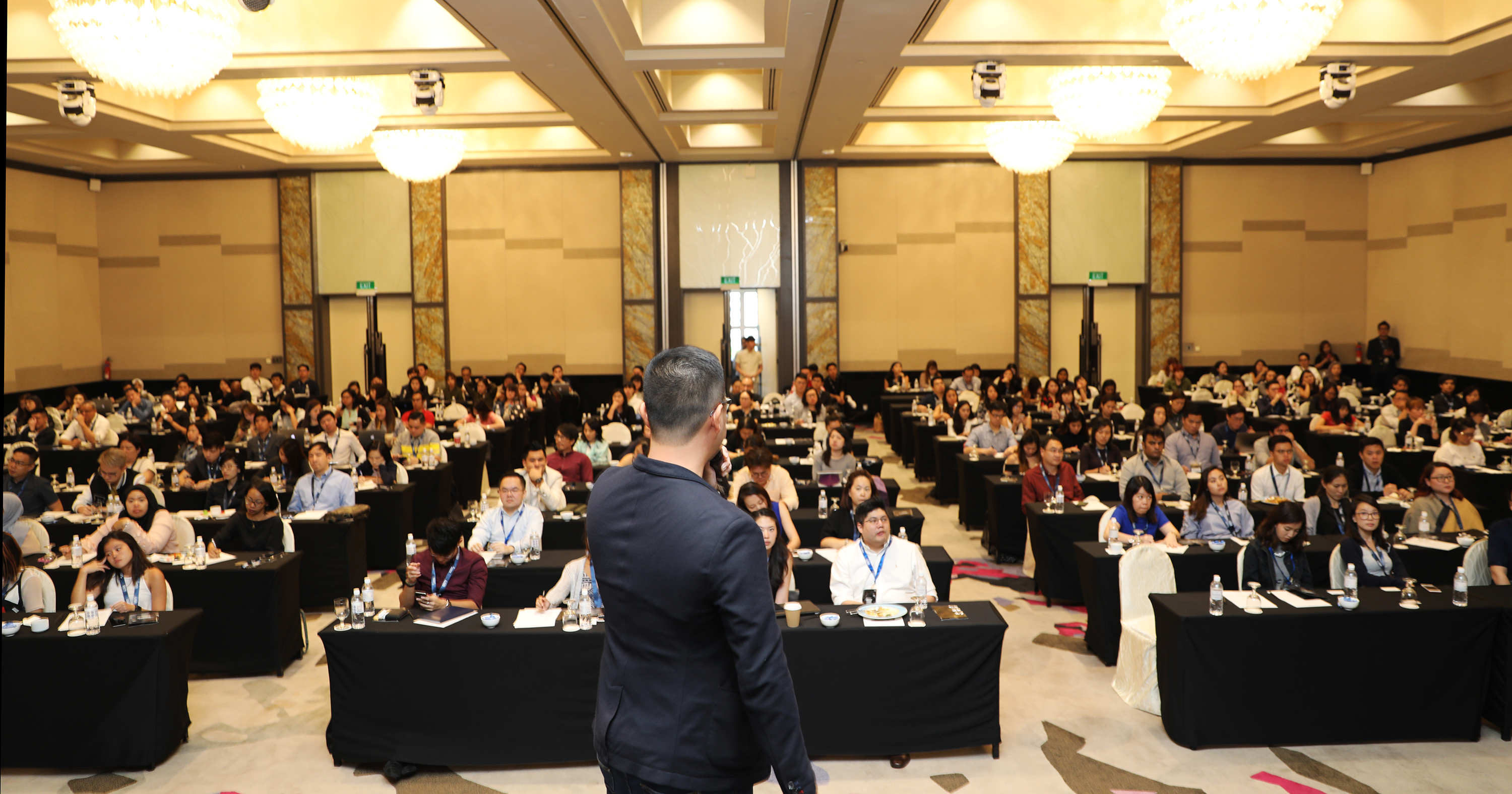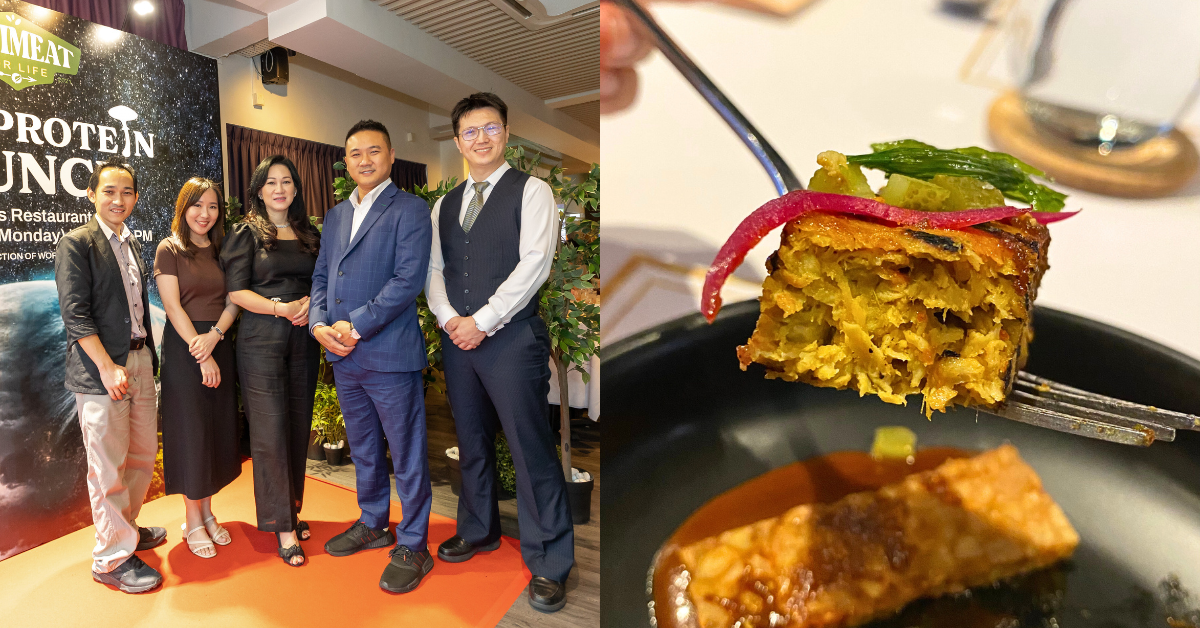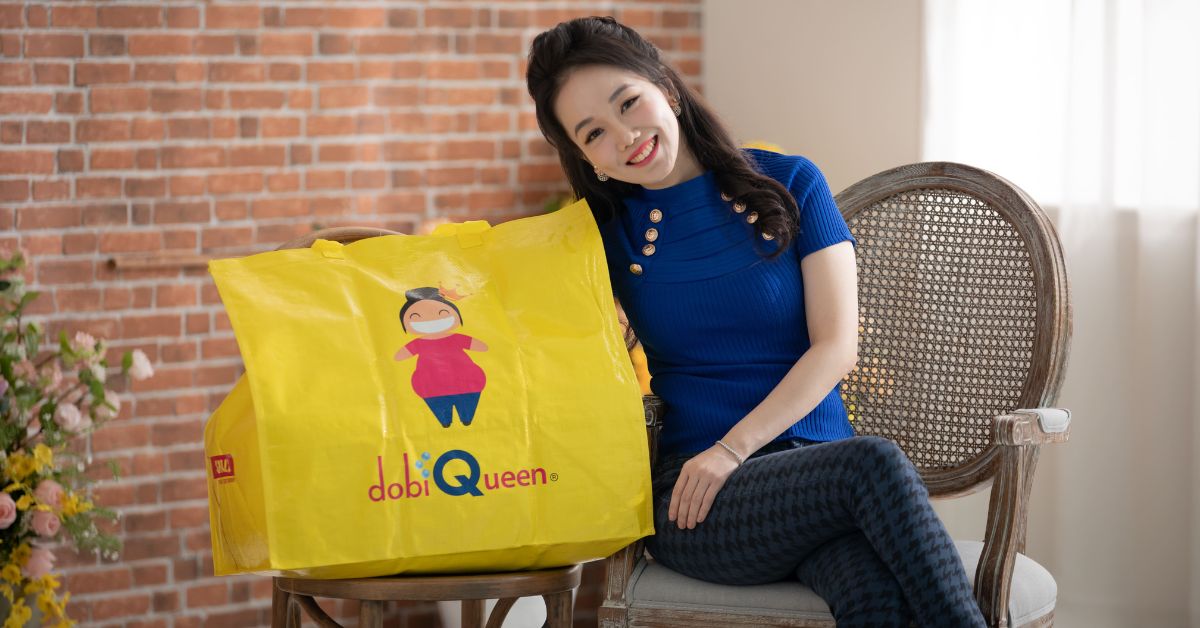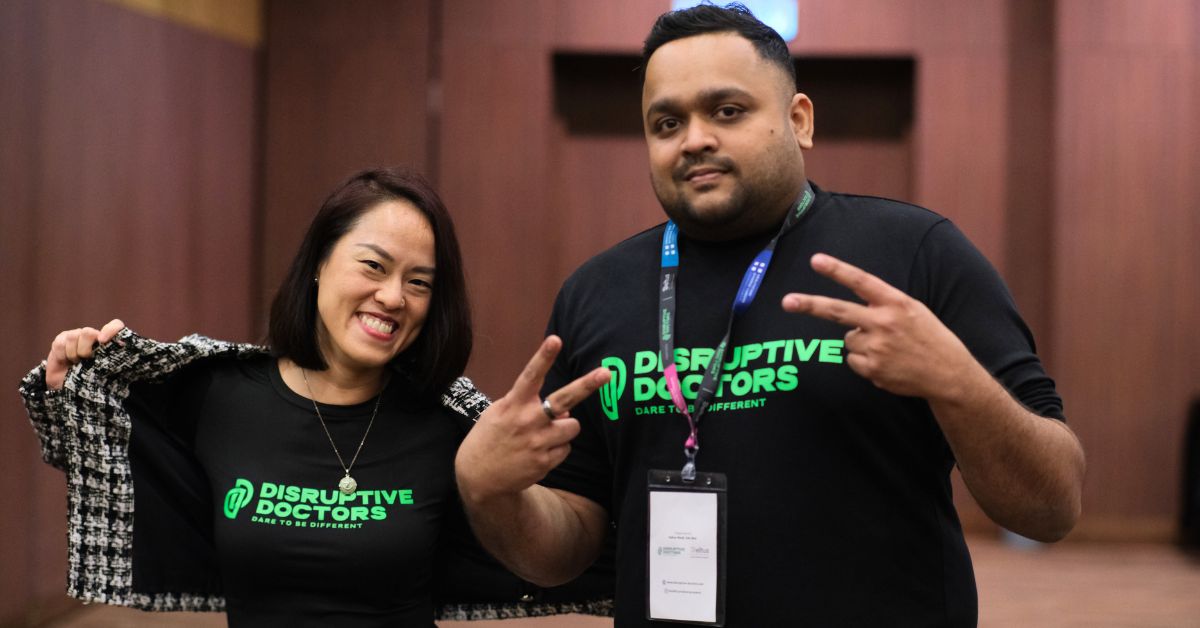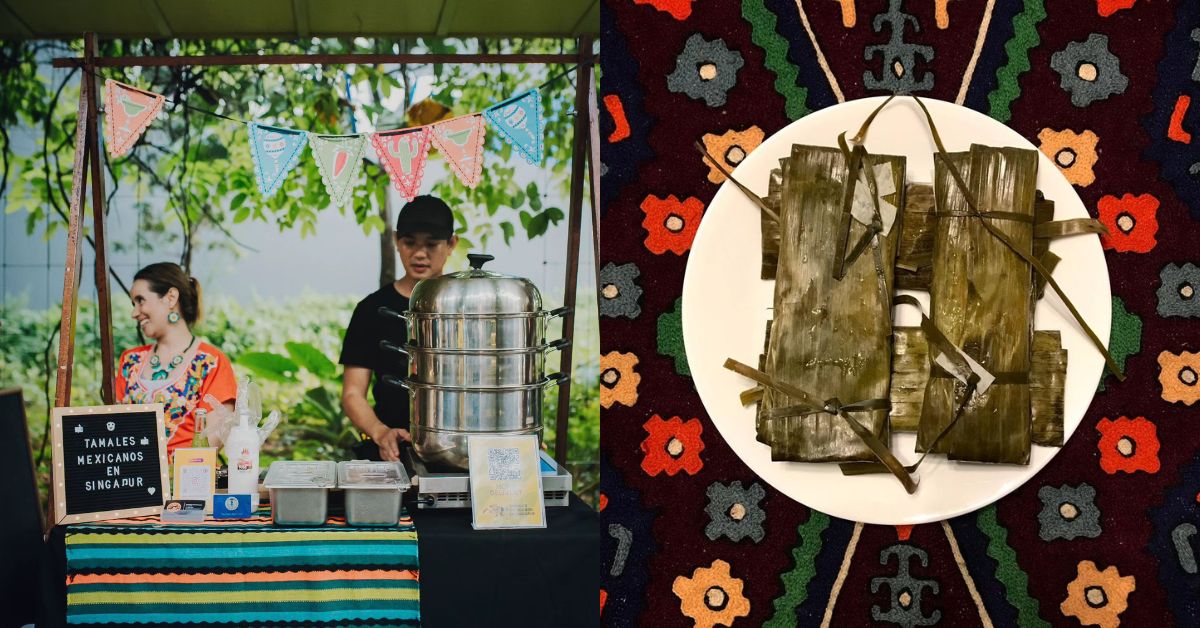Content Summit 2017 just came to a close, and we’re glad to say that it has been a resounding success!
From content creation to brand building, attendees were treated to a day of interesting insights and learnings from the various keynotes and panel discussions.
Here’s a recap of the day’s event, and some of the interesting pointers covered in each session!
From Zero To Hero – How We Orchestrated The Office Chef Internet Sensation: Ms Yeah

- In the past 8 months, this is what Ms Yeah had achieved
- Uploaded 34 videos
- Accumulated over 3 billion views
- Last month, visited Facebook in Hong Kong and it was exciting to know that she was the number 1 creator in Greater China
- Asked herself why so many people like her videos:
- Food has no boundaries, it’s a universal language that connects everyone
- She doesn’t speak in the videos, and thus everyone can understand them
- Most importantly, the creativity behind the videos
- Why she started this
- One day, she saw her colleague using an electric iron on his shirt, and this somehow made her think about how she could cook beef using the iron
- So she decided to shoot the process, and after uploading it on Facebook, the results were very good. So she decided to keep going in this direction
- How she comes up with ideas
- At the start, her team only has 2 people, but now she has 6 people in the team
- She is in charge of directing and planning, and there are 2 other planners in the team
- There’s also an editor, a cameraman
- An entire video usually takes about 3 to 4 days
- First day is for brainstorming ideas, and purchasing ingredients
- Shoot is for 1 to 2 days, editing is done in 1 day
- First is to decide what to cook and the equipment that is needed, and sometimes look for ideas online
- If there’s an advertiser who wants to be featured on her videos, she’ll think of ideas that can showcase the features of the products
- How is content distributed?
- In China, the videos have already been distributed over 200 platforms
- “I think in China, you need to try different types of platforms and you need have differentiation such as titles, covers, and different managing strategies.”
- Now, she is focusing on Youtube and Facebook for the overseas markets and that’s where she gets the most views and followers
- Monetisation plans
- In China, the monetisation strategy is advertisements and product placement – one of which has already accumulated over 400 million views
- Overseas, it’s via Youtube revenue and the money from there can help to continually support her team and video production
- One of the examples of product advertisement: using a Huawei phone to smash garlic and as a chopping board
- Future plans
- Will continue to make more interesting videos
- Might also start an ‘Asian cooking tour’ that will see her collaborating with the stars of other countries to do some interesting cooking videos
- Maybe go into movie or music industry to try something different
- Question: With Facebook banned in China, were there any challenges because of that?
- She actually didn’t spend any money to grow on Facebook, and it just relies on the creativity for the videos to grow
- Most Facebook fans are from India, Malaysia, Singapore, and USA
- Question: What are her influences and references?
- Most ideas come from brainstorm meetings and from real life
- She doesn’t actively just follow 1 person or channel (to get inspiration)
- Question: It’s hard to plan a success – what’s Plan B if it fails?
- Before shooting these videos, she was a planner in her office and she majored in directing – this was actually her job all the time
- Question: Any plans to collaborate with beauty brands?
- She collaborated with a facial mask brand before. The client actually first asked her to cook with the mask – “but that’s impossible!”
- So she used another way to talk about the client’s mask, and she used food as makeup – client was also very happy about that
Understanding And Dissecting The Complicated Digital Audience In Singapore: Jacky Yap of GRVTY Media, Mark Tan of RICE Media, Eleanor Dickinson, Editor of Mumbrella Asia

- As disruptors in the local media scene, what do you think about the existing content landscape?
- Tan: For me, I’m a relatively newcomer in the media industry. We’ve currently reached the peak of the media, where there’s a lot of options. There is no secret sauce, it all goes back to the quality of the content. It all starts with having a great team. Somehow I’ve been blessed with people who I believe in to help me produce great content.
- Yap: We started 3 to 4 years ago with Vulcan Post first. And when we started, it was purely editorial – we are just churning out content everyday. Writing articles and conducting interviews to produce original content. That was 4 years ago, but over the years, we have slowly shifted our focus and also look at producing Facebook videos – both short-form and long-form. Video content really pushes the brand very quickly, especially for new brand pages or new publications. Facebook seems to favour video content. When we started Millennials of Singapore, we focused purely on video content, and the reach just exploded.
- Facebook seems to be quite temperamental – you never know when it’s going to change. So how do you prepare for that?
- Tan: Facebook is a double-edged sword. Can help newcomers lower the barrier of entry, but at the same time, we are still at the mercy of their algorithm. This also means that content producers work twice as hard to make sure your content stands out and finding a differentiation point. Consumers are spoilt for choice when it comes to Facebook content – out of our 24 hours a day, we are all competing for that 5 minutes of your attention. So it’s a very competitive space because of Facebook.
- You said that there’s no secret sauce in terms of content growth. But are there any tricks of the trade that you would recommend?
- Tan: You need to have a unique voice and set the DNA/tone of your content.
- Yap: Find out what people are spending their time on because we are competing for their attention. A format that is slowly rising, especially in China, is live streaming – so that’s also something that we are looking at. When people wake up, what apps do people launch on their phones? Then we create content tailored specifically to that platform.
- Regarding unfiltered content – how do you know when you are going too far?
- Tan: Make sure that every content that you put up has a takeaway. It needs to leave the audience feeling enlightened about something.
- Yap: As content creators, we ask ourselves: are we okay with the content that we put up? Is this gonna piss anyone off? Is the quality good enough? If it’s good, then we publish it.
- So what kind of content pisses people off? Are you talking about content that are risque, or like a clickbait video?
- Tan: When the actual content doesn’t actually live up to the headline. It really bugs me when I read a headline like ‘You Won’t Believe What This Girl Did’ but when I read the article, I get let down.
- Yap: We try to avoid touchy topics in Singapore such as racial and religious matters, because there is no right answer for these kind of things. But increasingly, we realise that people do have an appetite for such content – they want to read up on such topics. So we need to balance between the two.
- For the past one to two years, do you think the audience have become more mature? And do you think your content is now pushing the boundaries?
- Tan: Yeah. But I think if the only point of your content is to provoke people, then you are only going to have more pissed off audience. I think the insight is more important and it’s also important to ask why your audience is angry. Are they angry because of the misleading headline, or because of the story itself?
- Yap: Sometimes we try to push boundaries by including vulgarities in an article, and it still works. The younger audience love it, but the more mature audience may not accept it. They are exposed to all these negative elements online anyway. If we want to reach out to the younger millennials, we should embrace it because if they want to consume those kind of extreme content, they would have access to such content online anyway. It’s okay to drop the ‘F’ bomb sometimes, it’s okay to talk about sex sometimes, as long as there’s a takeaway.
- Tan: The key here is to know when to use it (the F word), and save it for situations that really mean something. If you use it in every singe article, people can get desensitised to that.
- You mentioned that risque content is readily available online. So are you saying that if you play it safe, no one is going to read your content?
- Yap: Safe content is not creative. As content producers, we face a challenge in how we stand out from the crowd, and how we create content that matters.
- Tan: Nowadays, we are selling more of the creative process and Ms Yeah is a great example of it. Yes, she cooks food in the office but it’s not about the food. It’s about story telling.
- From articles, you move to videos and more Facebook-related posts. Are there any new formats that are emerging into the scene?
- Yap: Telegram is quite an interesting platform, even PM Lee has an account there. If we can capture a particular niche audience in that channel, that’s good. We are looking at live-streaming as well. It’s still a bit tricky because content is still very raw, so we need to look at managing the content there. The future of live-streaming is still very exciting. It’s challenging, but very exciting because no one is doing it.
- Tan: I agree that live-streaming is an exciting new frontier. But at the same time, the tricky thing is how do we use these new formats to build brand equity? If we look at Facebook and Telegram, at the end of the day, your content sits in their platform. Ultimately, is your content good enough that people will go directly to your platform to access the content? We don’t consume content like this anymore – usually it pops up on our newsfeed instead and that’s how we are exposed to the content.
- Live-streaming isn’t exactly very new. 2 to 3 years ago, Twitter introduced Periscope. How do you think it’s going to be different to Facebook Live or to whatever else is different from what’s out there?
- Yap: In the States, it may be very popular but it’s not very popular in this part of the world. China, Japan and Korea are increasingly playing a huge role in the type of media that we Asians consume. I think soon everyone will jump on the live-streaming bandwagon and we can see what everyone else is doing in real-time and I think 46/5G will be able to support that depth.
- Tan: For new content formats, we must always ask what’s the purpose of it? For live-streaming, there is a sense of urgency to that format so I expect a lot of content producers to use it for breaking news. Not sure about content that is not time-sensitive, but you never know.
- Yap: But video content is still very important. We just have to make sure that we come up with different and interesting video content.
- How do we ensure that the video is consumed within your own platform? Since Facebook video is so popular, does that add anything to your platform?
- Tan: Facebook views only count for the first three seconds, and then the drop-off rate is actually quite high. So how can you make your video content so good that if you put a one-minute teaser on your Facebook, people want to go to your website to view it? Pretty much like Vice.
- Yap: We try to be less romantic with the content that we create. Whatever we put up, it belongs to the Internet. As long as the audience is there, we go for it. It doesn’t matter if it doesn’t translate back to the website. As long as we can measure the video views, we can account for it. For website traffic, there are other ways to optimise it such as search engine optimisation (SEO).
TheSmartLocal – Building The Buzzfeed Of Singapore: Bryan Choo of TheSmartLocal.com

- Started 5 years ago – “Only my mum was reading TheSmartLocal.”
- A simple mission – wanted to prove that Singapore wasn’t boring, help people decide what they can do this weekend
- Answering questions like “Does it really cost $190 to bungee jump?”
- TSL wasn’t actually very successful in the first year
- January 2013-14 was unprofitable
- November 2013 – tried something different, and have been on an upward trajectory after that
- 2013 vision: Let’s make a TripAdvisor by locals
- SEO-driven traffic
- Problem 1: Not enough to attract attention (~100k visits a month, not enough for advertisers)
- Problem 2: Singaporeans don’t like writing reviews (most preferred to write negative reviews)
- Late 2013: “Let’s try something new.”
- Got the idea at the Phi Phi Islands – didn’t even bother to write a short article
- Article was “52 Things To Do Singapore”
- Over 100k people visit the site on the day it was published
- “Let’s do it again, nobody else in Singapore was doing it.”
- Steps to success:
- Experimenting
- Prioritise users, create quality content
- Curation of articles
- Ideation is the most important thing
- Build a brand
- How to create content:
- With clients – it is to get views for their article
- All the hard sell articles performed badly
- “Why not create viral content for clients?”
- Use this strategy for various platforms and formats as well
- Putting in key marketing messages while also ensuring that it’s not hard sell
- Native advertising
- Brief > Ideation > Results
- Ideation was the hardest – years of AB testing
- “Why doesn’t everyone just do it?”
- Manpower investment can be very high
- Ideation is everything, and traditional publishers might still be hesitant to try because the investment might not pay off in the end
- Most important things to take note of for successful campaigns
- Ideation
- ‘Filters’ on the internet: be part of the 1% of the content that is being seen
- Branding alignment
- For authenticity, engage in clients that fit with your brand
- Endorsement
- Let the publishers do the promotion for you (the client)
- Ideation
- “The internet is not just Facebook”
- Web, Facebook, Youtube, Instagram
- Build a brand with different distribution points
- Web (searchable, information packed BUT needs social amplification, losing to video)
- Facebook (open network, easiest to go viral BUT ‘disappears’, lowest quality of views)
- Youtube (subscription-based, highest quality of views BUT subscription-based as well)
- Instagram (high view rates)
- Learnings
- Virality is not 100% predictable, always changing
- But what you DO know is what doesn’t work
- Question: Will people start to reject advertorials like how they reject ads?
- People won’t actually mind, but the content needs to be good
- Question: Does reach translate to sales for the client?
- It comes back to the content and ideation
- Question: Balancing between objective reporting and reporting for advertisers
- Need to balance between organic content and advertorials
How Short Form Videos Are Powering The Digital Media Space Now: Ms Yeah, Johnathan Chua of GRVTY Media, Annette Lee of SGAG

- How to decide what goes into the video? How to get and retain attention?
- Lee: Platform is mainly on Facebook, and the videos mostly auto-play.
- That is actually very useful to help us grab their attention
- Try and create bigger text in the black bars around the videos
- When it comes to Facebook, attention is gotten by the first glance
- Branding not right at the front
- Chua: The tough part is getting audience to click the ‘play’ button
- Caption, title, thumbnail and targeting are all very important
- Cannot be taught, needs to be observed
- Makes sure that the content actually reaches the clients/agencies before the pitch/meeting using targeting
- Yeah: Video should not be too long
- Most important thing is the creativity
- Good content will bring in good revenue
- Lee: Platform is mainly on Facebook, and the videos mostly auto-play.
- How to create a unique identity and ideate for content?
- Lee: Depends on the brief and also the budget
- Team comes together and bounce ideas off each other
- Chua: There are two major sharers: those who have a cry for help, those that show support to the former
- Who are the people we want to share the content, and the thumbnail should be what the people are thinking of already
- Yeah: 6 people responsible for different duties
- Collaboration, and brainstorm meetings every week
- Lee: Depends on the brief and also the budget
- Apart for monetisation, how much have you invested into producing videos?
- Lee: Everything that I could
- Started off as the first video person, and needed to do all the jobs involved
- While a team is needed, you can’t just wait around as well
- Chua: Video is an expensive operation
- Centralised video team which knows video the best, but that didn’t work out because it was too scattered. They also don’t own the DNA of the brand
- Now video teams for each brand
- Lee: Everything that I could
- Balancing between followers and advertisers
- Yeah: I don’t want to lose my fans over advertisers, so I just create the best videos
- Lee: Certain things, especially when it’s information-packed or dry, it can really help in a video
- Chua: Even though we can target 1,000 people that will buy something, for reports-sake, agencies and clients prefer the reach to be 100,000 – even though people won’t buy it
- Which video platform is the most successful, and why?
- Yeah: In China, Weibo and overseas, it’s Facebook
- Lee: Facebook, especially with the sharing button as well. Content also fits better there vs. Youtube
- Content market is getting saturated, how to stay ahead of competitors?
- Yeah: I feel that creativity is still the most important thing and also loyalty to the fans
- The stress of becoming a number 1 blogger is huge, chiong to produce more videos during her time away
- Perfecting shots until they are perfect – eg. she did the one shot video close to 50 times
- Brainstorm meetings are short (>30mins) because it’s all about giving the rough ideas and then going forward to shoot it
- Lee: Can’t just survive on doing the video format that is doing well at the moment
- Using their organic content to create something new, because there’s no need to show any results in case it fails
- Yeah: I feel that creativity is still the most important thing and also loyalty to the fans
- Tension between content team and audience team – one thinks that content/story is king and the other thinks that audience should come first
- Lee: Audience can’t be there without good content
- Focus on creating good content first and the audience will come to you first
- Do struggle, some clients want to hard sell – try to negotiate and recommend
- At the end of the day, we just need to work with what we got and do our best
- Chua: Audience can’t like what they don’t know
- If a new format doesn’t do well, we remedy with another piece of content
- Yeah: Follow our hearts and just do it
- Clients can have too many requests
- Lee: Audience can’t be there without good content
- For what kinds of businesses/content do you feel that video formats will not work?
- Lee: Contest-driven campaigns to drive clicks and participation ones don’t do very well
- Chua: Many video formats to explore, sometimes we need to reject because agencies already have the marketing mix already
- It can screw up the media if you just take on any clients
- Work with content producers early, don’t just fix the entire puzzle and then ask the producers to just fit in
Read part 2 of the recap here!
